Eruption of Indonesian Mount Kelut the largest since the 2010 eruption of Puyehue-Cordon Caulle in Chile
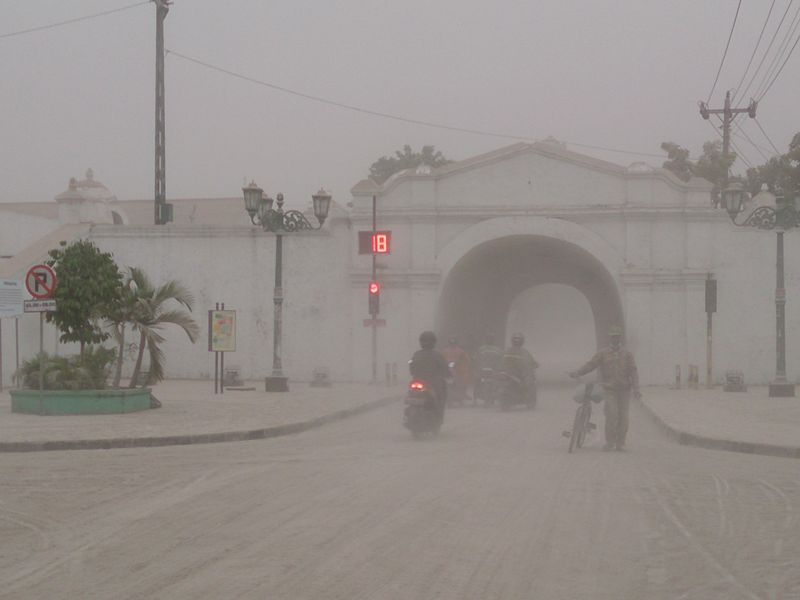
According to BNPB, moderate intensity tremors continue at Mount Kelut but the volcano has been showing a decline in the intensity of the eruption. The ash plume rising to about 3000 m in altitude was observed yesterday.
Mount Kelut erupted in the late hours of February 13, 2014, after just 2 hours of shallow earthquakes:
- The explosion ejected an estimated 80 – 160 million m3 of tephra and ranks as a VEI 4 (or subplinian) event;
- Eruption plume rose to up to 27 km altitude and produced an umbrella cloud at 19 km altitude that drifted over the Indian Ocean;
- This eruption was the strongest since the 2010 eruption of Puyehue-Cordon Caulle in Chile;
- In terms of quantity of SO2 ejected into the atmosphere, the eruption was a very modest event and is not expected to affect Earth's climate;
- Explosion was heard in Yogyakarta, 200 km to the west
- The explosion produced one of the largest-ever recorded volcano-related infrasound waves;
- An exclusion zone of the 10 km radius remains in place;
- There are still people who have not been evacuated;
- Official number of casualties is 4.
The four victims lived in villages in a radius of 7 km. At the site of one victim, ash was up to 20 cm thick. In addition to thick ash, hurl stones 5 – 8 cm in diameter were widely reported.
Head of Data Information and Public Relations BNPB, Sutopo Purwo Nugroho, sad that as of Saturday, February 15, there were still 56 089 people displaced.
One of the most remarkable aspects of the eruption was how quickly it built up, suggesting a very fast rise of magma occurred in the hours before the explosion. VSI mentioned that there were only 2 hours between the appearance of shallow earthquakes (the typical immediate precursors) and the onset of the eruption itself. With such little warning time, it was difficult to implement an effective evacuation. (VD).
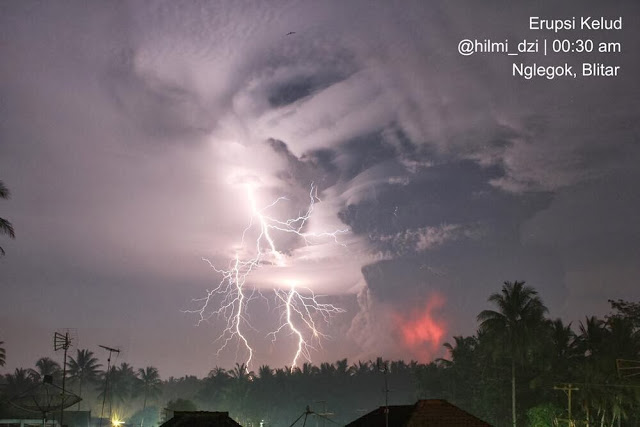
Image credit: @ hilmi_dzi
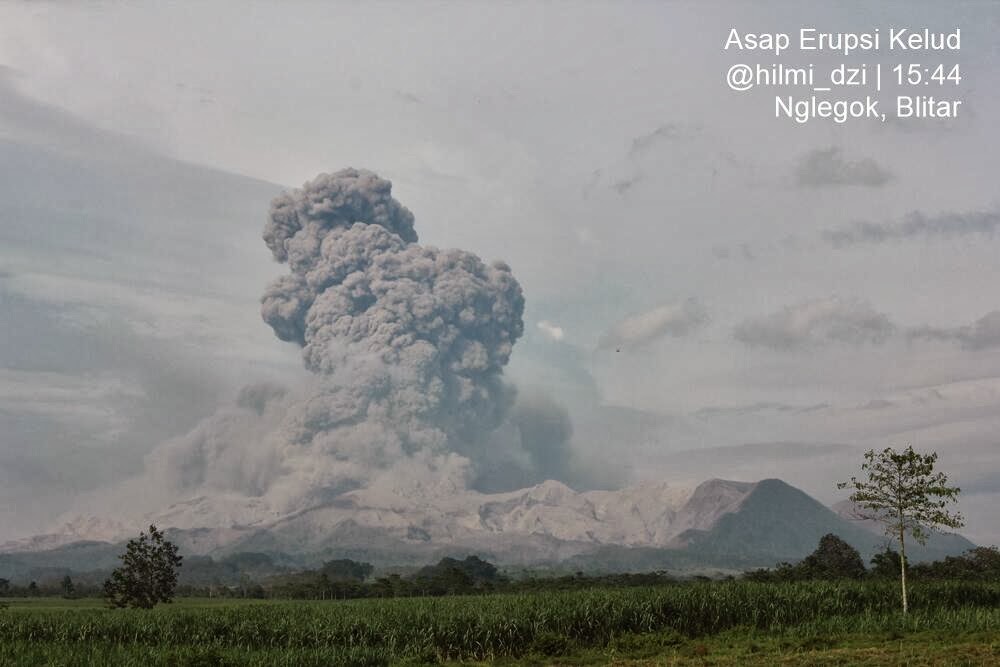
Eruptive activity of the volcano Kelut – February 14, 2014. Image: via twitter @ hilmi_dzi
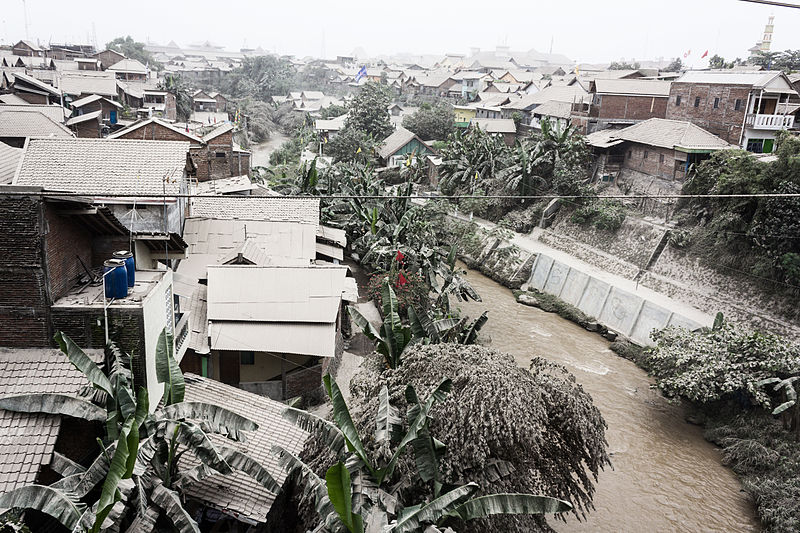
Kali Code in Yogyakarta (200 km west of Mount Kelut), and the nearby homes, during the 2014 eruption of Kelud. February 14, 2014. Author: Crisco 1492
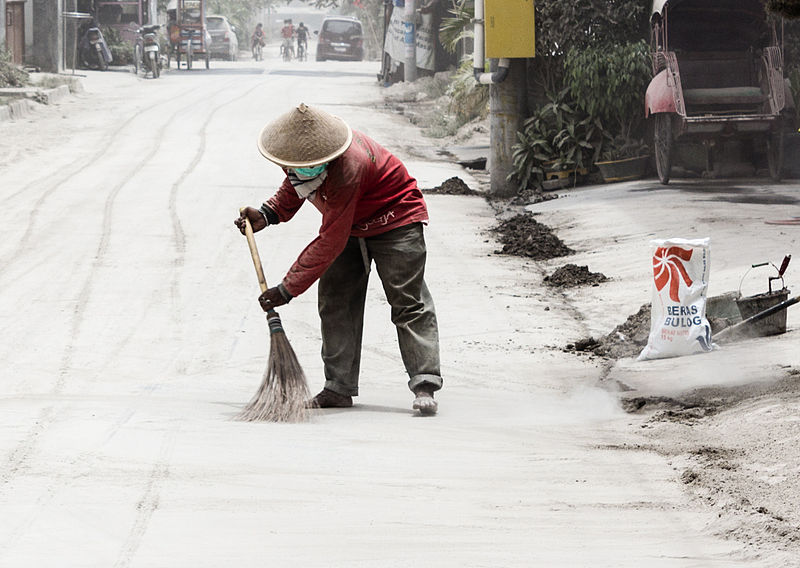
A man sweeping ash from the road during the 2014 eruption of Kelud. Yogyakarta (200 km west of Mount Kelut) – February 14, 2014. Author: Crisco 1492
The explosion ejected an estimated 80 – 160 million m3 of tephra and ranks as a VEI 4 (or subplinian) event. The eruption plume rose to up to 27 km altitude and produced an umbrella cloud at 19 km altitude that drifted over the Indian Ocean.
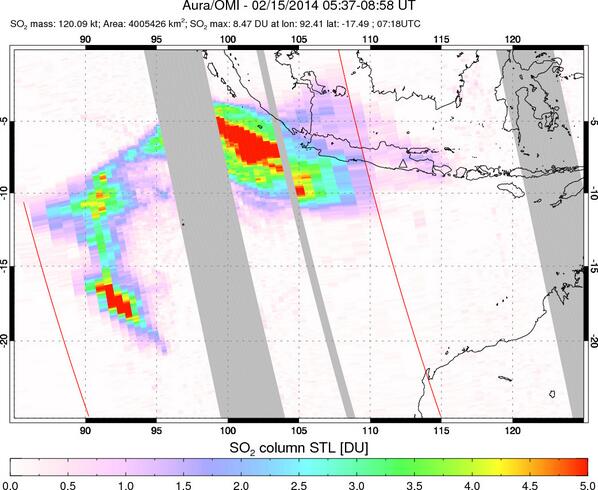
SO2 plume from Kelut's eruption over the Indian Ocean (@simoncarn) .
The explosion produced one of the largest-ever recorded volcano-related infrasound waves. The pressure waves were picked up by stations all over the world, the furthest one being IS53 in Fairbanks, Alaska at >11.000 km or >6.800 mls, and the calculated traces point all into the direction of Kelut.

Traces of recorded infrasound waves pointing back to Kelut (CTBTO, facebook.com/CTBTO)
Featured image credit: Aldnonymous

Commenting rules and guidelines
We value the thoughts and opinions of our readers and welcome healthy discussions on our website. In order to maintain a respectful and positive community, we ask that all commenters follow these rules:
We reserve the right to remove any comments that violate these rules. By commenting on our website, you agree to abide by these guidelines. Thank you for helping to create a positive and welcoming environment for all.